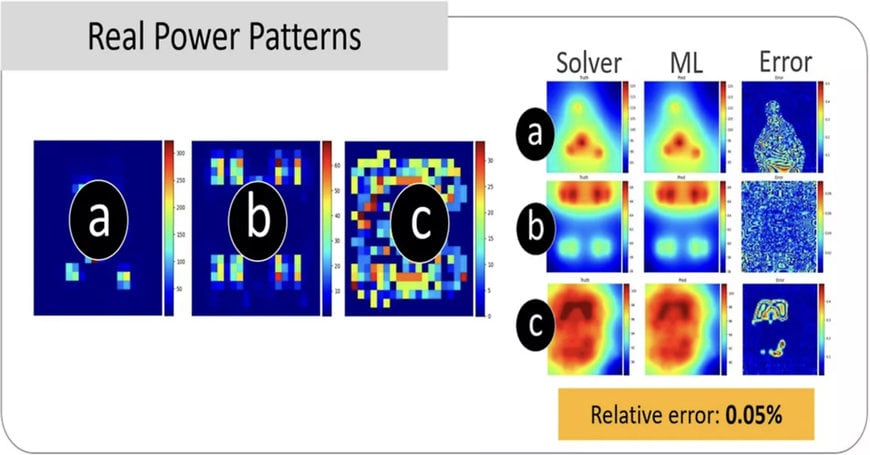electronics-journal.com
22
'24
Written on Modified on
Ansys to Drive Major Advances in AI-Powered Semiconductor Design Using NVIDIA AI
Integration of NVIDIA Modulus AI framework with the Ansys SeaScape platform will enable engineers to easily build customized AI solutions that can improve designer productivity and quickly identify optimal design configurations.
www.ansys.com

Ansys On-chip thermal predictability with NVIDIA Modulus
Ansys announced it is integrating the NVIDIA Modulus AI framework into Ansys semiconductor simulation products to deliver AI functionality that significantly speeds up design optimization. This will enable engineers to create customized and generative AI surrogate models that accelerate design iterations and explore a larger design space. The technology integration will enhance the outcome for a wide range of products, including GPUs, HPC chips, AI chips, smartphone processors, and advanced analog integrated circuits.
NVIDIA Modulus is a physics-AI framework to train and deploy models that combine physics-based domain knowledge with simulation data, allowing users to create customized AI engines tailored to their needs. As AI gets integrated into computer-aided engineering workflows, it is important for users to have a seamless and integrated pipeline that allows data generated by solvers to flow to AI frameworks used to train models. Integrating NVIDIA Modulus framework into the Ansys SeaScape platform will enable customers to use high-fidelity data generated by Ansys tools to train their AI engines and then use the newly created engine for more robust design exploration.
For example, designers can train their AI models in the integrated Modulus framework using their library of completed designs in Ansys RedHawk-SC. Once the AI is trained, it can be used to identify optimal designs based on desired specifications — such as size, power, and performance — in a fraction of the time. Ansys plans to add Modulus-created AI accelerators to its semiconductor solutions including RedHawk-SC, Totem-SC, PathFinder-SC, and RedHawk-SC Electrothermal for faster thermal simulation and easier power calculation. With this AI-enhanced process, Ansys and NVIDIA have demonstrated over 100x speed-up for thermal simulations.
“NVIDIA Modulus makes it easy to train and deploy AI models that are physics-informed and reflect real-world causality,” said Tim Costa, senior director of CAE, EDA & quantum and HPC at NVIDIA. “The integration with Ansys simulation products for multiphysics semiconductor design are ideal applications for Modulus to enhance simulation speed and efficiently identify the best design solutions.”
Ansys announced it is integrating the NVIDIA Modulus AI framework into Ansys semiconductor simulation products to deliver AI functionality that significantly speeds up design optimization. This will enable engineers to create customized and generative AI surrogate models that accelerate design iterations and explore a larger design space. The technology integration will enhance the outcome for a wide range of products, including GPUs, HPC chips, AI chips, smartphone processors, and advanced analog integrated circuits.
NVIDIA Modulus is a physics-AI framework to train and deploy models that combine physics-based domain knowledge with simulation data, allowing users to create customized AI engines tailored to their needs. As AI gets integrated into computer-aided engineering workflows, it is important for users to have a seamless and integrated pipeline that allows data generated by solvers to flow to AI frameworks used to train models. Integrating NVIDIA Modulus framework into the Ansys SeaScape platform will enable customers to use high-fidelity data generated by Ansys tools to train their AI engines and then use the newly created engine for more robust design exploration.
For example, designers can train their AI models in the integrated Modulus framework using their library of completed designs in Ansys RedHawk-SC. Once the AI is trained, it can be used to identify optimal designs based on desired specifications — such as size, power, and performance — in a fraction of the time. Ansys plans to add Modulus-created AI accelerators to its semiconductor solutions including RedHawk-SC, Totem-SC, PathFinder-SC, and RedHawk-SC Electrothermal for faster thermal simulation and easier power calculation. With this AI-enhanced process, Ansys and NVIDIA have demonstrated over 100x speed-up for thermal simulations.
“NVIDIA Modulus makes it easy to train and deploy AI models that are physics-informed and reflect real-world causality,” said Tim Costa, senior director of CAE, EDA & quantum and HPC at NVIDIA. “The integration with Ansys simulation products for multiphysics semiconductor design are ideal applications for Modulus to enhance simulation speed and efficiently identify the best design solutions.”
www.ansys.com

